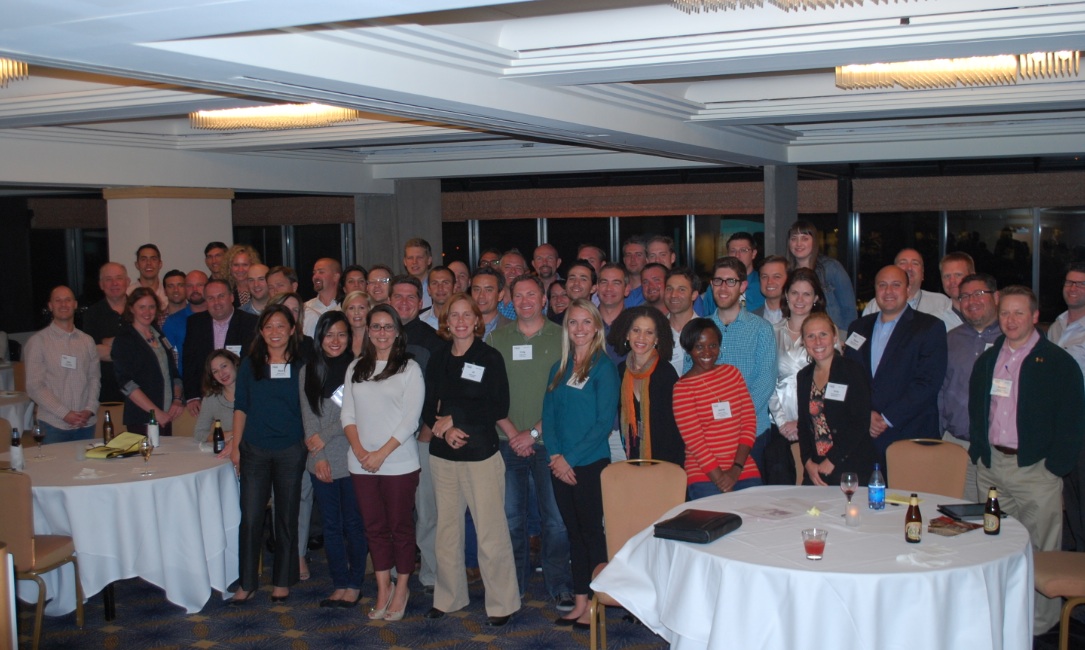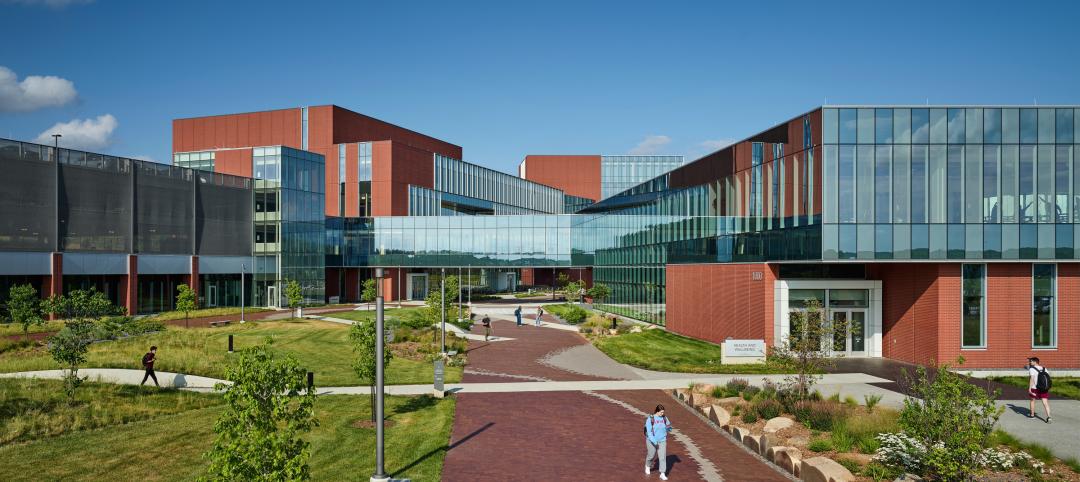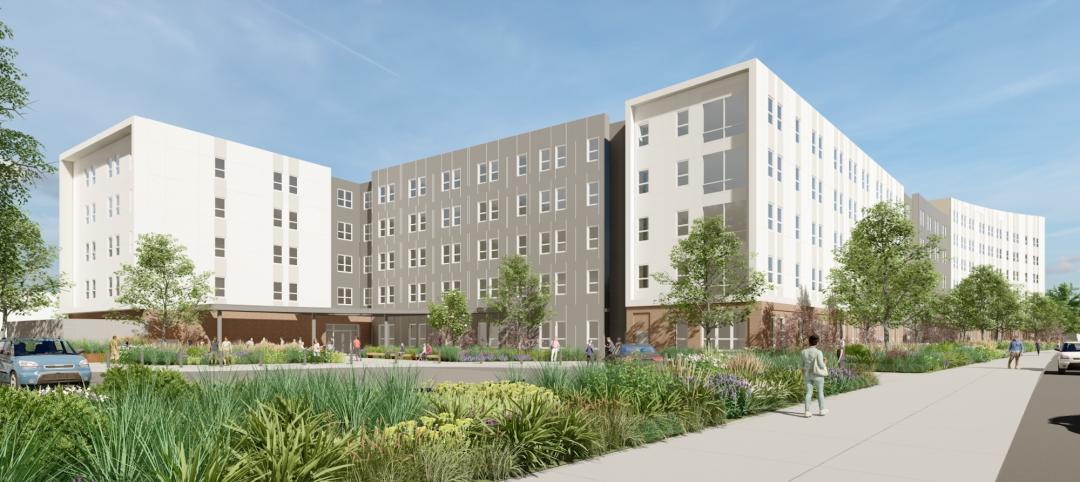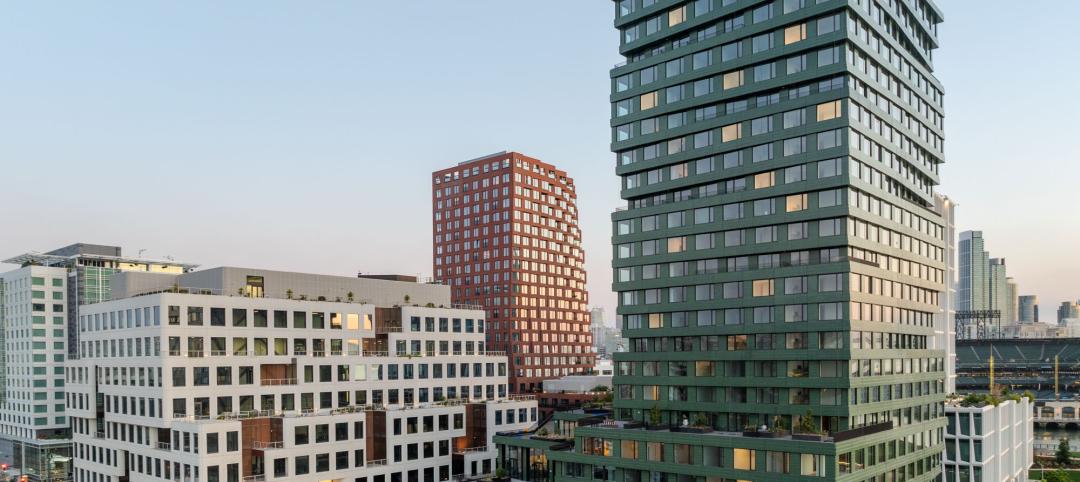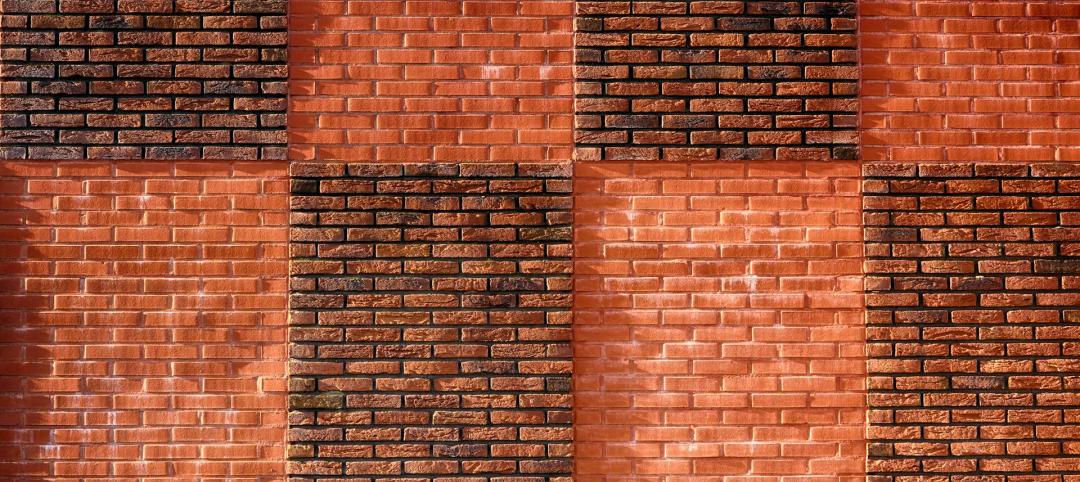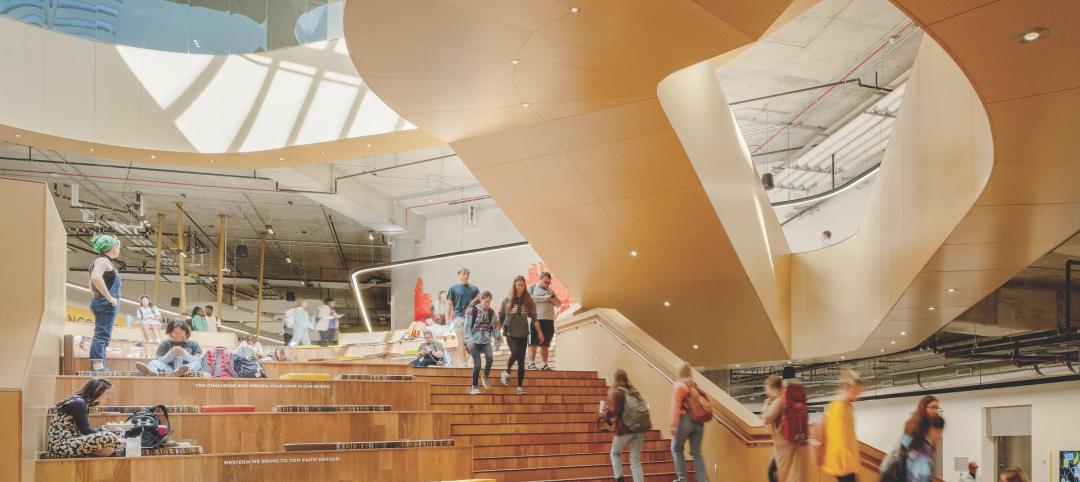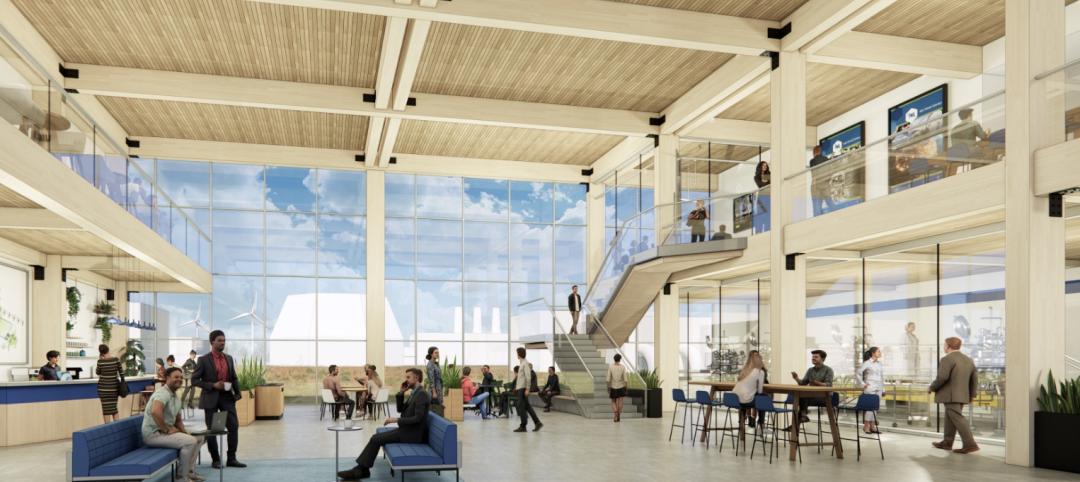A group of 65 up-and-coming AEC professionals gathered in San Francisco last week for Building Design+Construction's Third Annual Under 40 Leadership Summit. The highlight of the 2.5-day event was the Vision U40 competition, where 15 teams battled for $5,000 in prizes to see who could develop the best solutions for today's pressing social, economic, technical, and cultural problems related to the built environment.
A few of the common themes presented by the groups were mobility (e.g., adapting the food truck concept for special causes, such as health and wellness education) and the use of technology (e.g., tablet and smartphone apps for the built environment).
Each team had just 90 seconds to pitch their concept to the entire group (see videos below), who voted for their top five. The five winning teams—including the $3,000 grand prize team—will be announced later this week.
In the meantime, we want your feedback on the 15 concepts presented at the Under 40 Leadership Summit. Watch the 90-second pitches below and vote for your favorite idea. Click here to vote!
1. Mobile Wellness
Problem: Americans spend 75% of their average day at work, school, or traveling to and from, leaving just six hours for everything else in their lives.
Solution: Bring healthcare and wellness to local communities (especially schools and workplaces) through a comprehensive, incentivized mobile wellness program that adapts the food truck model. Lab services, health checkups, vaccinations, and more, will be administered on the fly, and at the convenience of the consumer.
2. Cultural Food Shift
Problem: The lack of fresh, healthy food in impoverished areas has become an epidemic in the U.S. How can we alter the culture of food in America, where the consumer demands change in the foods offered by local suppliers?
Solution: Inspire healthy eating in areas of low income through easy-to-build-and-maintain personal and community gardens. The gardens will serve not only as a source of food, but also a gathering area where community members can meet to exchange food, goods, and ideas. The program will kick off with private family gardens and eventually expand to include large, public gardens.
3. WellBOX
Problem: During the next 20 years, 970 million people will be added to third-world countries. These areas lack access to critical healthcare services and clean water.
Solution: The WellBOX is a portable health clinic that can be dropped into any region of the world to provide clean drinking water and healthcare services and education. The self-sustaining unit will be powered by solar panels and will tap into a local well to provide water filtration. The modular structure will come equipped with tele-medicine equipment, allowing doctors to diagnos remotely.
4. M.C.R. (Mobile Culture Reinvented)
Problem: Living in and around major cities does not support a healthy lifestyle, due to long commute times and reliability on the car. Americans, on average, spend 600 hours in their car each year, or roughly an hour and 40 minutes per day.
Solution: M.C.R. is a network of workplace solutions that use zoning, technology, telecommuting, and micro-cities to reduce or eliminate lengthy commutes. For example, re-zoning could encourage the creation of micro-cities in the suburbs. Similarly, technology could increase the use of telecommuting.
5. Less = More
Problem: Thirty percent of India's population (1.2 billion people) lives below the poverty line. While the country has a fairly successful food subsidy program, much of the food goes to waste due to a lack of storage space.
Solution: Build "smart" silos that incorporate wireless technology to connect with regional government warehouses that could handle overflows of food.
6. Internext
Problem: The digital information world offers us instantaneous, universal access, but inundates us with data in a constant, overwhelming stream. As a result, our connections to others and our surrounding community are becoming less meaningful. We've lost our sense of place.
Solution: Internext filters when and where you receive specific digital information based on rules you set, helping you prioritize your life following preferences that reflect your values. Want to spend more time with your family? Set a rule that holds all email after 6 p.m. on workdays. Want to connect with fans of your favorite team while on vacation? Let Internext find the popular hangouts.
7. Healthotron
Problem: Childhood obesity has doubled over the past 30 years. In 2010, more than one-third of the children in the U.S. were overweight or obese.
Solution: Apply the food truck model to health and wellness education. The Healthotron integrates playscapes, interactive video games, and large-screen TVs for teaching kids and parents about nutrition and exercise. A smartphone/tablet app alerts kids when the truck is nearby, encouraging groups of children to get out and play.
8. Design Pulse
Problem: The AEC industry has a good understanding of how design impacts economic and environmental factors, but what about human and social capital issues? How could design decisions holistically improve the human spirit?
Solution: Design Pulse is a sortable, searchable database offering architects and designers a wealth of real-time information about a given environment. The goal: arm design professionals with metrics needed to make design choices that will have a positive effect on the human spirit. The database will aggregate data from a number of sources: geospatial apps, Wikipedia, social media, and wearable computers like Fitbits and Nike FuelBand.
9. The Kids Are Alright
Problem: The younger generation prefers to stay inside, whether in the classroom or on the couch. Additionally, parents are missing out on sharing the same learning opportunities their children have.
Solution: Create a Foursquare-type mobile app that, instead of pulling up nearby restaurants, provides educational information based on your current location—from details on the oak tree in your backyard to the history of the landmark building in the center of town. The app encourages kids and their parents to interact with and learn about their surrounding environment.
10. F.A.B.R.I.C.
Problem: "Unsocial" media has unraveled the fabric of our neighborhoods. How do we encourage people to get outside and interact and connect with their neighbors and communities?
Solution: This digitized sidewalk encourages people to get outside and weave back into their communities. F.A.B.R.I.C. (short for "future, active, bio-optic, responsive, inter-community" sidewalk) features virtual, interactive games, energy generation, social spaces, and an associated mobile app that, for instance, will alert users when a friend is nearby.
11. A Seed That Inspires
Problem: Most communities are strongly focused on the growth of its children, with large investments in schools and other programs. But most working adults end up separated from the educational process. How can we reintegrate the adult population with the educational process, and, more importantly, the educational process with the adult population?
Solution: What if we gave the children in our communities the right to lead us? For one day a week, they select the initiatives and the next steps for the community, and they are empowered to direct us. As adults, we take a step back from the work world and learn from the imagination, skills, and inspiration of our children.
12. Shyft
Problem: There are many issues with urban mobility today, including congested roads that lead to lengthy commutes and large, fixed, costly transit systems that offer limited coverage.
Solution: Shyft combines multiple emerging technologies with existing municipal mass transit solutions to bring innovative commuting to the masses. The system partners existing vehicle commuters with people in need of a ride, based on the commute route. All users are pre-screened, and drivers can earn money for picking up Shyft members.
13. Destination Food
Problem: More than 23 million Americans live without access to affordable, nutritious food. Making things worse, 40% of the food in the U.S. goes to waste.
Solution: Destination Food is an open-source technology platform that connects food supply with demand in a simple, convenient, and affordable way. The app includes a database of profiles and ratings for growers, GPS mapping for connecting consumers to the closest food suppliers, and a scheduling tool for setting up deliveries.
14. ENVIROpedia
Problem: The issues of global warming, climate change, and the environment are extremely complex. What can we do about them as individuals?
Solution: ENVIROpedia is an open-source, crowd-sourced information exchange platform that relies on the power of many to answer tough questions about local environments and economies. Want to know where your concrete mix came from? Or the environmental impact of a copper roof? Simply ask the group. Chances are someone will know the answer.
15. URB-RAL
Problem: The growing urbanization movement will continue to widen the gap between urban and suburban environments. The two have quite a bit to offer one another.
Solution: URB-RAL will establish physical and virtual hubs to encourage and facilitate trade between urban and rural communities. The program will partner urban neighborhoods with sister rural communities and use vehicles to exchange goods and services (e.g., medical services for rural communities and fresh food for urban areas).
Related Stories
Sustainable Design and Construction | Oct 10, 2024
Northglenn, a Denver suburb, opens a net zero, all-electric city hall with a mass timber structure
Northglenn, Colo., a Denver suburb, has opened the new Northglenn City Hall—a net zero, fully electric building with a mass timber structure. The 32,600-sf, $33.7 million building houses 60 city staffers. Designed by Anderson Mason Dale Architects, Northglenn City Hall is set to become the first municipal building in Colorado, and one of the first in the country, to achieve the Core certification: a green building rating system overseen by the International Living Future Institute.
3D Printing | Oct 9, 2024
3D-printed construction milestones take shape in Tennessee and Texas
Two notable 3D-printed projects mark milestones in the new construction technique of “printing” structures with specialized concrete. In Athens, Tennessee, Walmart hired Alquist 3D to build a 20-foot-high store expansion, one of the largest freestanding 3D-printed commercial concrete structures in the U.S. In Marfa, Texas, the world’s first 3D-printed hotel is under construction at an existing hotel and campground site.
University Buildings | Oct 9, 2024
Des Moines University Medicine and Health Sciences opens a new 88-acre campus
Des Moines University Medicine and Health Sciences has opened a new campus spanning 88 acres, over three times larger than its previous location. Designed by RDG Planning & Design and built by Turner Construction, the $260 million campus features technology-rich, flexible educational spaces that promote innovative teaching methods, expand research activity, and enhance clinical services. The campus includes four buildings connected with elevated pathways and totaling 382,000 sf.
Student Housing | Oct 9, 2024
University of Maryland begins work on $148 million graduate student housing development
The University of Maryland, in partnership with Campus Apartments and Mosaic Development Partners, has broken ground on a $148.75 million graduate student housing project on the university’s flagship College Park campus. The project will add 741 beds in 465 fully furnished apartments.
AEC Tech Innovation | Oct 8, 2024
New ABC technology report examines how AI can enhance efficiency, innovation
The latest annual technology report from Associated Builders and Contractors delves into how artificial intelligence can enhance efficiency and innovation in the construction sector. The report includes a resource guide, a case study, insight papers, and an essay concerning applied uses for AI planning, development, and execution.
Healthcare Facilities | Oct 8, 2024
Herzog & de Meuron completes Switzerland’s largest children’s hospital
The new University Children’s Hospital Zurich features 114 rooftop patient rooms designed like wooden cottages with their own roofs. The project also includes a research and teaching facility.
Mixed-Use | Oct 7, 2024
New mixed-use tower by Studio Gang completes first phase of San Francisco waterfront redevelopment
Construction was recently completed on Verde, a new mixed-use tower along the San Francisco waterfront, marking the end of the first phase of the Mission Rock development. Verde is the fourth and final building of phase one of the 28-acre project that will be constructed in several phases guided by design principles developed by a design cohort led by Studio Gang.
Brick and Masonry | Oct 7, 2024
A journey through masonry reclad litigation
This blog post by Walter P Moore's Mallory Buckley, RRO, PE, BECxP + CxA+BE, and Bob Hancock, MBA, JD, of Munsch Hardt Kopf & Harr PC, explains the importance of documentation, correspondence between parties, and supporting the claims for a Plaintiff-party, while facilitating continuous use of the facility, on construction litigation projects.
University Buildings | Oct 4, 2024
Renovations are raising higher education campuses to modern standards
AEC higher ed Giants report working on a variety of building types, from performing arts centers and libraries to business schools. Hybrid learning is seemingly here to stay. And where possible, these projects address wellness and mental health concerns.
Laboratories | Oct 2, 2024
Trends in scientific research environments: Q&A with Flad's Matt McCord
As part of an ongoing series, Matt McCord, AIA, NCARB, LEED AP BD+C, Associate Principal with Flad Architects, discusses the future of the scientific workplace.


